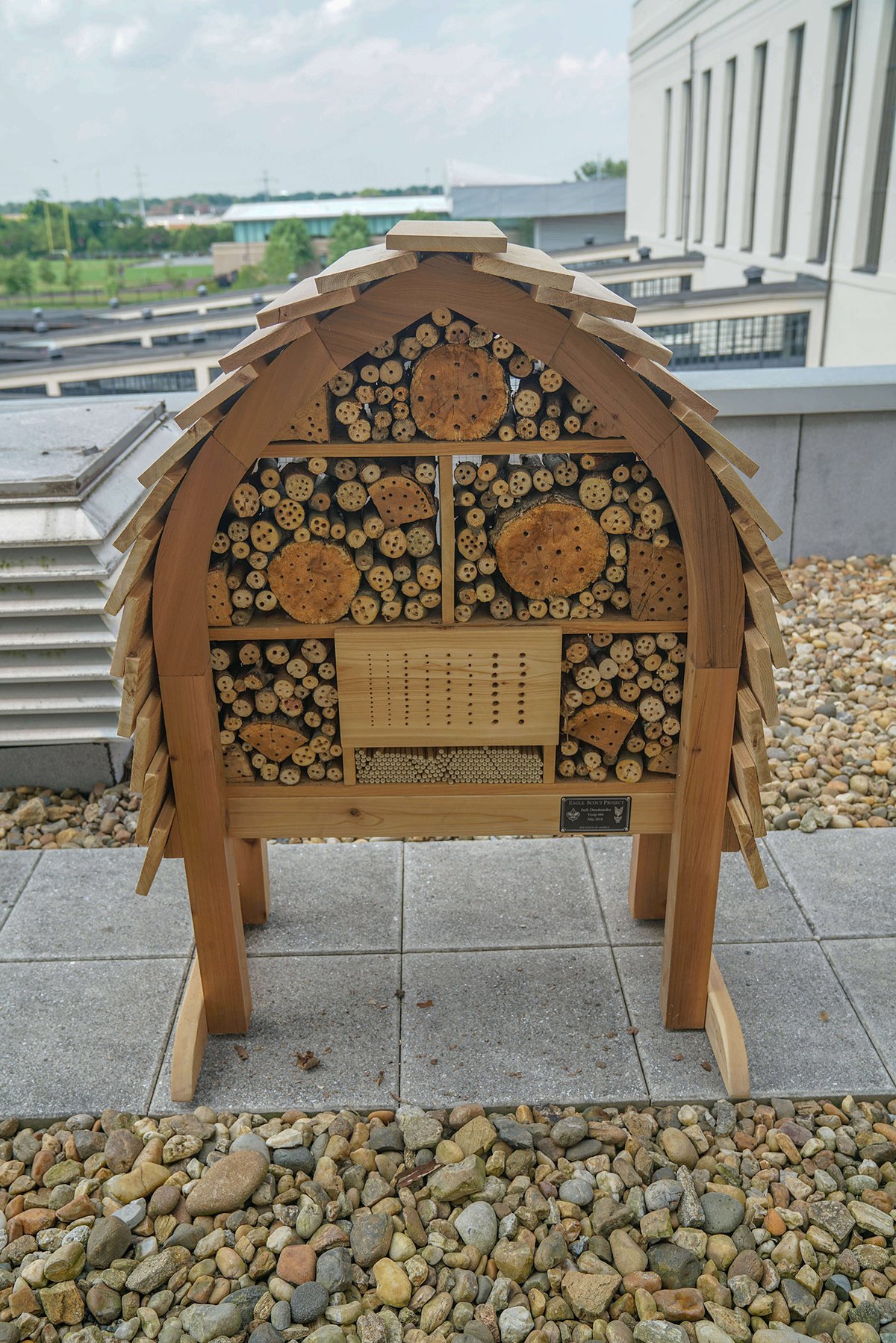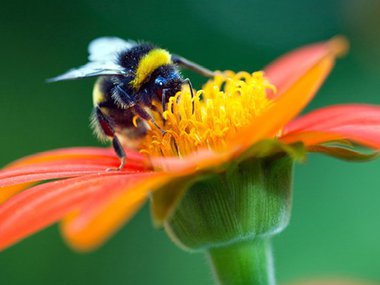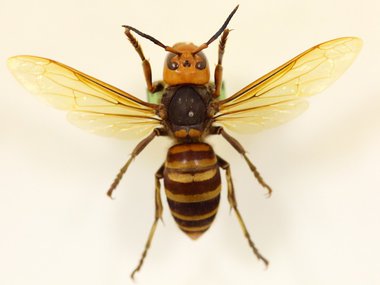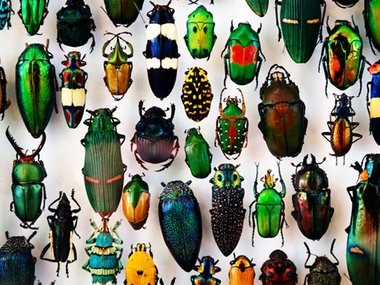What’s Buzzing at the Museum?
The observational honeybee hive in our EcoLab is un-BEE-lievably sweet, but recently the Museum added a new spot for the native bee pollinators that’s creating a lot of buzz!
On June 19, during National Pollinator Week, Jack Omohundro, a rising sophomore at St. Christopher’s and a Museum volunteer, installed a native bee hotel to complete his Eagle Scout project. The wooden hotel provides native bee species a nesting habitat.
“I call it a bee hotel because you can’t really call it a bee hive since it’s for individual solitary bees,” Jack said. He expects the hotel to attract Mason, Carpenter, Leaf-cutter and several other native bee species that nest in wood cavities.
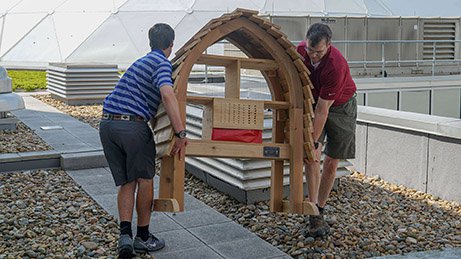
Instead of living socially like Honeybees and Bumblebees, solitary bees make individual nest cells for their larvae. Solitary bees are not aggressive—they rarely, if ever, sting. They do not make honey, but they are very important pollinators of fruit crops. While Jack calls it a bee hotel, the occupants aren’t staying for short terms. The structure will serve as the bee’s permanent home for eleven months of its life as it develops from an egg through a larval stage, then as a dormant pupa and finally emerges as an adult.
Jack chose to donate his project to the Museum after volunteering for a couple of years and wanting to do more to conserve the environment. “I just love the atmosphere here, and I really believe that the Science Museum is a worthy organization,” he explains.
Jack believes that humanity is currently neglecting the issue of native bee conservation. He wanted his Eagle Scout project to have both a practical use and serve as a teaching tool for the Museum.
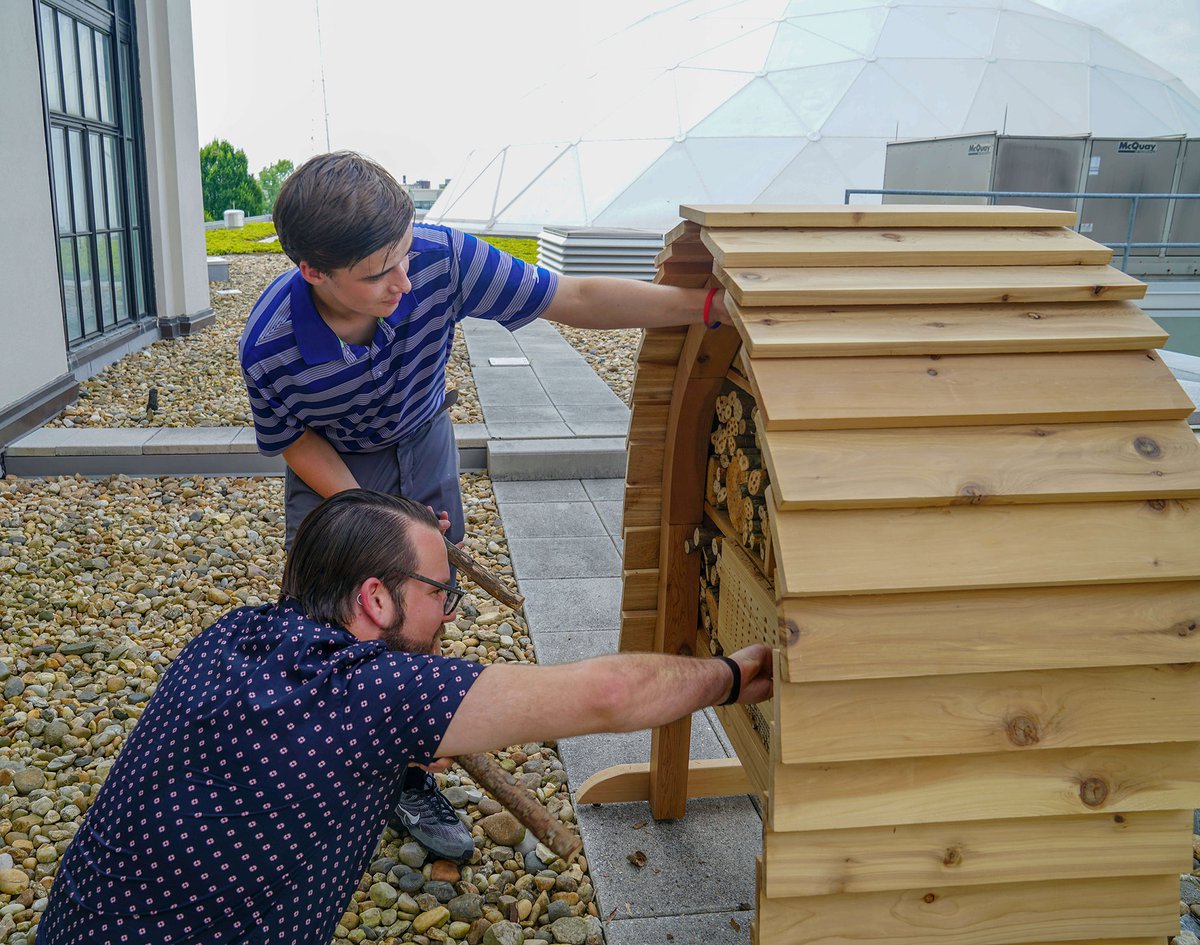
The project took nearly a year to complete. Jack spent countless hours planning, collecting materials and mastering his wood working skills to assemble the final product. Jack said the structural design he chose was difficult to construct because “building the arch leaves a very low margin for error.”
The final product measures 57" high x 43" wide x 23" deep and weighs nearly 100 pounds. It was installed on the roof outside the Museum’s EcoLab so guests can compare the native bee hotel to the hive inside swarming with European honeybees.
There are nearly 20,500 bee species in the world, and more than 4,300 species are native to the U.S. Many native bee species do well in urban areas provided there are flowers nearby and areas where they can nest. The combination of the Pollinator Garden – home to 500 native plants – installed on the Museum’s campus in October 2017 along with the addition of the new native bee hotel creates a closed loop in the ecosystem.
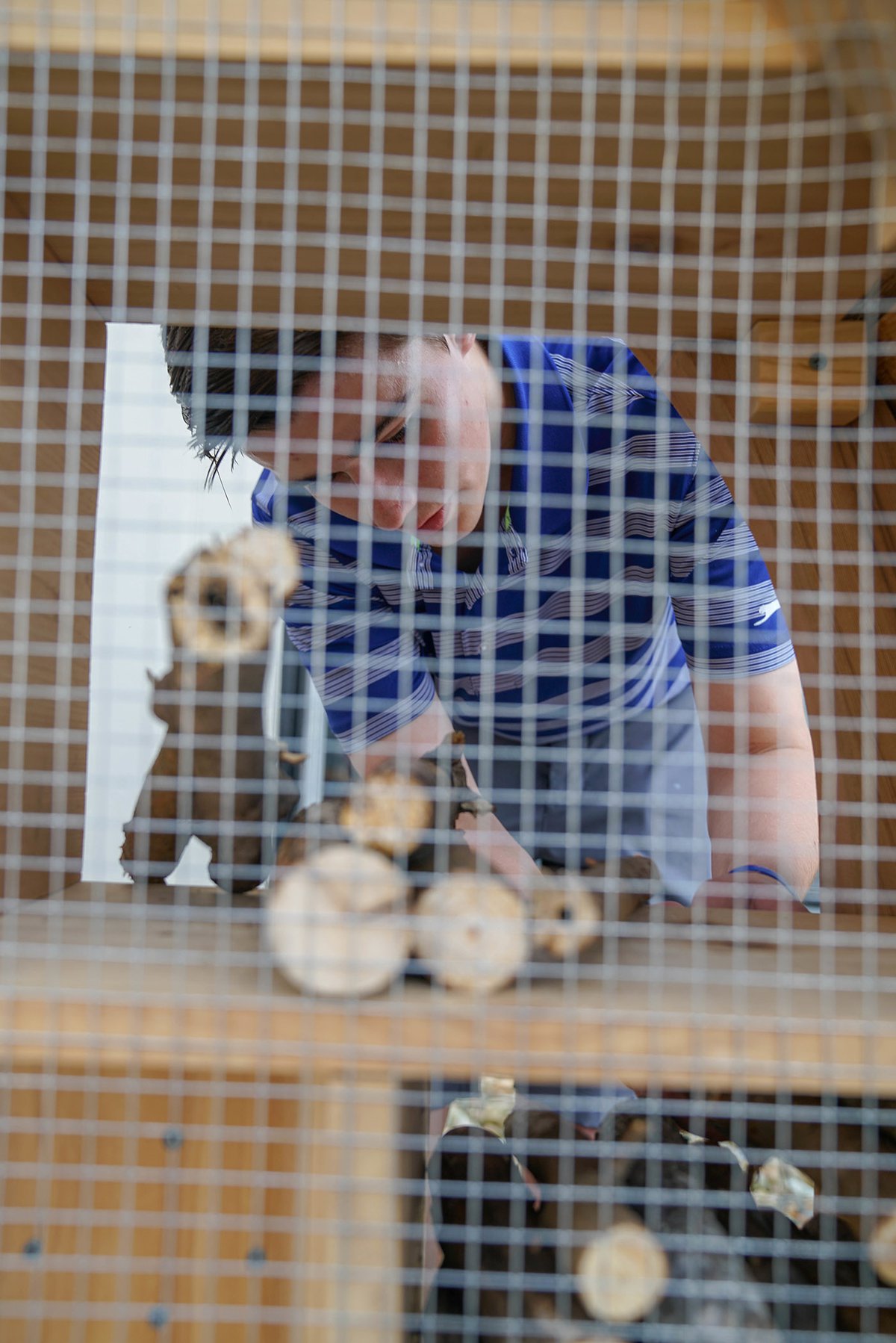
Dr. Jeremy Hoffman, the Museum’s Climate and Earth Scientist, said Jack’s project builds on the Museum’s efforts to heighten awareness of how ecosystems work and the importance of interconnections among lifeforms. He added that the final product is also a “beautiful piece of craftsmanship!”
Now that it’s installed, Jack is relieved and very proud of his accomplishment. He is hopeful that his hotel will not only give native bees an opportunity to grow and thrive, but also help Museum guests better understand the importance of conserving the environment.
Written by Anna Trask Wallace, Science Museum of Virginia Intern
